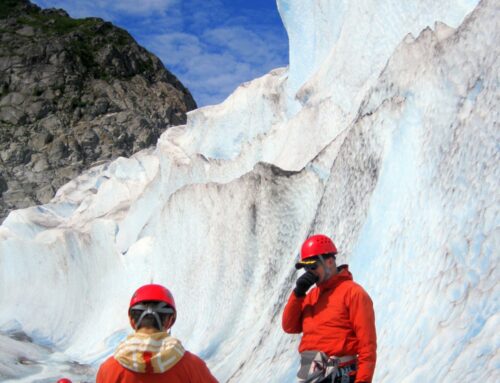Comparing Health Insurance Options: Alaska vs. Arizona
Health insurance is a critical aspect of maintaining well-being, and understanding the options available in different states is essential for making informed decisions. When comparing health insurance options between Alaska and Arizona, several factors come into play, including the range of plans, coverage, and cost. Both states offer unique advantages and pose specific risks that need to be carefully considered by residents. This section delves into the comparative analysis of health insurance options in Alaska versus Arizona, highlighting the benefits and potential drawbacks of each.In Alaska, health insurance options are influenced by the state’s remote geography and lower population density.
These factors can lead to higher premiums and fewer plan choices. However, Alaska also offers certain advantages, such as coverage for telehealth services, which can be particularly beneficial given the state’s vast and often inaccessible regions. Additionally, Alaska’s health insurance plans often include comprehensive coverage for preventive care, which is crucial for mitigating long-term health risks. On the downside, the limited number of healthcare providers can pose a challenge for residents seeking specialized medical attention.Conversely, Arizona boasts a more competitive health insurance market with a broader range of options.
The state’s larger population and urban centers contribute to more affordable premiums and greater accessibility to healthcare services. Arizona’s health insurance plans often emphasize wellness programs and preventive care, which are advantageous for maintaining overall health. However, the risks associated with Arizona’s health insurance landscape include variability in plan quality and the potential for higher out-of-pocket costs for certain services. Residents must carefully evaluate their options to ensure they select a plan that best meets their healthcare needs and financial situation.In conclusion, both Alaska and Arizona present distinct health insurance landscapes, each with its own set of advantages and risks.
Alaska’s health insurance options cater to the unique needs of its residents by offering telehealth services and comprehensive preventive care, albeit with higher premiums and fewer choices. Arizona, on the other hand, provides a more competitive market with a variety of plans and generally lower premiums, but residents must navigate the potential for inconsistent plan quality and higher out-of-pocket expenses. Understanding these differences is crucial for residents of both states to make informed decisions about their health insurance options.
The Impact of Climate on Health and Insurance Needs
The stark differences in climate between Alaska and Arizona have significant implications for health and health insurance needs. In Alaska, the cold and often harsh weather conditions present unique health risks, such as frostbite, seasonal affective disorder, and respiratory issues due to cold air exposure. Conversely, Arizona’s hot and dry climate can lead to dehydration, heatstroke, and exacerbation of chronic conditions like asthma. These environmental factors necessitate tailored health insurance options that address the specific risks associated with each climate, ensuring residents have access to appropriate medical care and preventive measures.In Alaska, the advantages of comprehensive health insurance become particularly evident during the long, severe winters.
Residents may require coverage that includes mental health services to combat seasonal affective disorder, as well as robust emergency care for injuries related to icy conditions. Additionally, the remote nature of many Alaskan communities means that telehealth options are invaluable, providing access to medical advice and treatment without the need for extensive travel. Therefore, health insurance plans in Alaska must be designed to cover these unique needs, offering peace of mind and financial protection against climate-related health issues.Arizona’s climate, characterized by extreme heat, demands health insurance that addresses the dangers of prolonged sun exposure and high temperatures. Policies that include coverage for heat-related illnesses, skin cancer screenings, and hydration therapies are essential.
Moreover, the dry environment can aggravate respiratory conditions, necessitating insurance options that provide access to specialists and long-term treatment plans. The advantages of having a well-rounded health insurance plan in Arizona cannot be overstated, as it ensures residents are protected against the severe health impacts of their environment.Ultimately, understanding the impact of climate on health is crucial for selecting the right health insurance. Both Alaska and Arizona present unique challenges that require specific coverage options to mitigate risks effectively. By recognizing these environmental factors, individuals can make informed decisions about their health insurance needs, ensuring they are adequately protected and can take full advantage of the available medical services.
This tailored approach not only enhances individual well-being but also contributes to the overall health of the community.
Access to Health Services: Rural Alaska and Urban Arizona
Access to health services presents a unique set of challenges and opportunities in both rural Alaska and urban Arizona. In rural Alaska, the vast and often inaccessible terrain can make it difficult for residents to access timely medical care. The limited availability of healthcare facilities means that many Alaskans must travel long distances to receive treatment, which can delay diagnosis and exacerbate health risks. Conversely, urban Arizona boasts a higher concentration of healthcare providers and facilities, offering residents a broader range of health insurance options and medical services within close proximity.One of the significant advantages of living in urban Arizona is the accessibility to a diverse array of healthcare services.
In cities like Phoenix and Tucson, residents have multiple health insurance options, allowing for tailored healthcare plans that meet individual needs. This accessibility reduces the risks associated with delayed medical care and enhances overall health outcomes. Furthermore, urban settings often benefit from advanced medical technologies and specialized care, which can be crucial for managing chronic conditions and emergencies.In contrast, rural Alaska faces substantial challenges in providing comprehensive healthcare services. The geographic isolation and harsh weather conditions can impede the delivery of medical supplies and the availability of healthcare professionals.
However, there are also unique advantages to the health services in rural Alaska. Community-based health programs and telemedicine initiatives have been developed to bridge the gap in healthcare access. These programs offer innovative options for residents to receive medical consultations and treatments remotely, mitigating some of the risks associated with geographic isolation.Despite the disparities in healthcare access between rural Alaska and urban Arizona, both regions are working towards improving health outcomes for their residents. In Alaska, efforts to expand telehealth services and enhance community health programs are critical in addressing the healthcare needs of remote populations.
Meanwhile, Arizona continues to invest in healthcare infrastructure and insurance options to ensure that urban dwellers receive comprehensive and timely medical care. By understanding and addressing the unique challenges of each region, it is possible to leverage the advantages of their respective health services to promote better health for all residents.






Leave A Comment